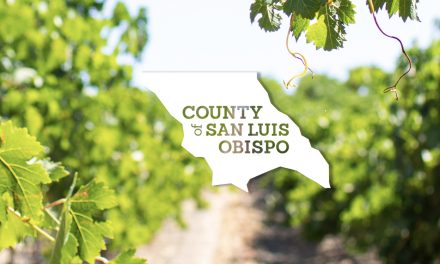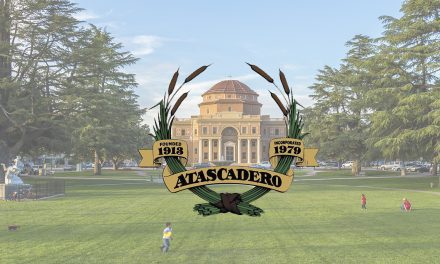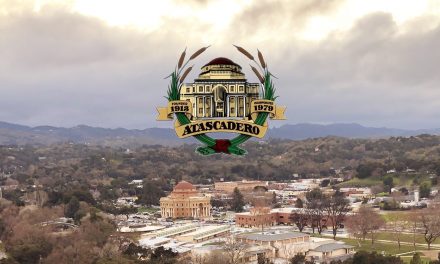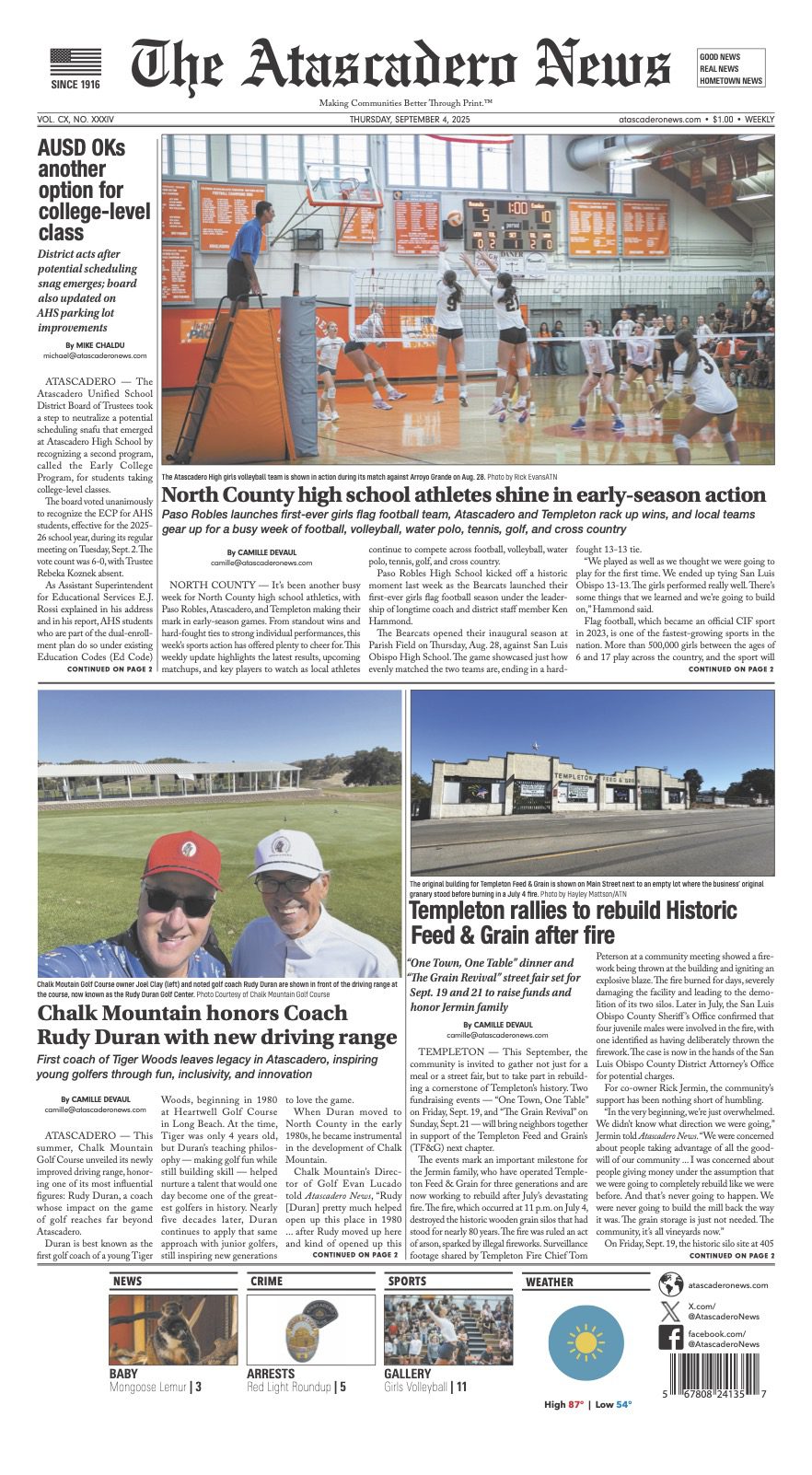
In January, the Atascadero City Council eased into the new year with budget approvals and presentations. During the public comment portion, Atascadero resident Richard Moen stepped forth and voiced his concerns about several roads that “are in dire need of repair” and require the City’s attention. Moen named the degrading San Anselmo Road on both sides of the overpass, the needed repairs on Santa Lucia and Portola roads near Atascadero High School and the ubiquitous pigeons and their droppings at the Traffic Way and El Camino intersection.
Public Works Director Nick DeBar was pleased to say that solutions for each of the roadway issues are currently in the works. The pavement repair and rehabilitation on El Camino Real from San Anselmo Road to San Benito Road is one of the City’s Capital Improvement Projects and after some preliminary design and samples are taken, work should begin in 2020 to improve the road. The estimated project cost reaches $697,660 with almost half of the price to be paid from state and local grant funds. The Sana Lucia road project will commence this year at the cost of $975,000 and will be paid from local transportation funds. DeBar also assured the Council that through taxes approved by the public in the F14 sales tax, the transportation projects are well-funded. Mayor Heather Moreno affirmed that transportation funds are solely designated as such and that even if it were possible, the Council has no intention of reallocating that money to other projects.
Council member Roberta Fonzi asked for clarification between road rehabilitation and resurfacing. DeBar stated that rehabilitation addresses “a more structural deficiency in the pavement” as opposed to sealing cracks in the asphalt or applying a topical slurry seal or crack sealing.
The problem with pigeons is pointedly peculiar. In large part, the birds roost under the bridge which lands in the Caltrans jurisdiction. Therefore, any construction to deter fowl activity must be performed or approved by the state. DeBar said the City is looking into hiring an individual to trap and ‘relocate’ the birds and the City is also talking with Caltrans about possible deterrents such as netting under the bridge.
Community Development Director Phil Dunsmore addressed the dying magnolia tree in Sunken Gardens and put forth a request to have it removed. Demonstrating how badly off the tree is, Dunsmore showed pictures of mushrooms sprouting around the base of the magnolia. Since it is designated as a “heritage tree,” the Council must approve its removal which it did with a 5-0 vote.
During his presentation, Dunsmore brought to the Council’s attention a desire to begin landscape planning for the park and took a look back at the history of the public place.
“I wanted to introduce the topic about what I call reforestation or replacement of the trees,” Dunsmore said, “and looking at the possibilities of planting now for succession to get growth while the old ones are phased out.”
Initially, the park was designed as a more formal garden with pathways and smaller plants. When first planted, the cedars that now tower over the space were the size of Christmas trees. Dunsmore remarked how in the 1950s there was a gas station on the El Camino side of the park that was later removed in the ‘60s. Dunmore noted that the latest remodel in 2005 brought designated pathways and additional trees.
Council member Charles Bourbeau asked what the anticipated lifespan of the larger trees are in the garden. Dunsmore answered that the cedars are reaching their
life expectancy.
“The Cedars,” said Dunsmore “they do appear that they are reaching their max peak for a park-like setting. We got a hundred years or so out of them, and that’s pretty darn good.”
Fonzi asked if the Coast Live Oaks are susceptible to fungus and disease when planted in highly-irrigated areas. Dunsmore answered that these trees do well if planted initially in irrigated regions but problems arise if they are accustomed to drier areas and then irrigation is introduced.
After the vote, the Council directed Dunsmore to proceed with developing reforestation options for the park. Mayor Heather Moreno stated that the board would be open to any suggestions his department offered.
The Atascadero City Council meets on the second and fourth Tuesday of every month at 6 p.m. at City Hall, located in the historic Atascadero Colony Administration Building at 6500 Palma Avenue. Attendees should enter on Lewis Avenue side of the building.













